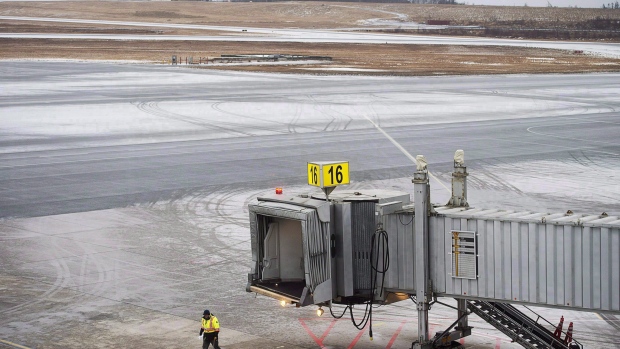SaskPower, SRC join nuclear energy not-for-profit group
Story by Alec Salloum • Leader Post

Minister Responsible for SaskPower Dustin Duncan speaks during a press conference to announce the relationship between SaskPower, Saskatchewan Research Council and the CANDU Owners Group at SaskPower head offices on Monday, April 29, 2024 in Regina.© Provided by Leader Post
The province has made another small step in its nuclear journey as SaskPower and the Saskatchewan Research Council (SRC) join a nuclear energy not-for-profit corporation.
The two entities are now members of the CANDU Owners Group (COG), which consists of groups operating CANDU (Canada Deuterium Uranium) reactors in Canada and around the world, as well as researchers, suppliers and other nuclear industry members.
Canadian CANDU clients include New Brunswick Power, Ontario Power Generation and the privately-owned Bruce Power. It also has reactors in operation in China, India, South Korea and Argentina.
SaskPower “has an obligation to make the most informed decisions possible whether to proceed with SMRs [small modular reactors] in 2029,” said Dustin Duncan, minister responsible for the Crown corporation, who argued that becoming a member of COG will help achieve that.
“Regardless of what happens at the federal level, SaskPower needs to continue to do its due diligence as to whether or not (building) small modular reactors is going to be a part of the energy mix in Saskatchewan,” Duncan said during a joint announcement Monday morning.
Related video: Sask. residents will get carbon tax rebates despite province withholding funds (cbc.ca) Duration 2:01 View on Watch
COG is “the primary technical group in Canada” when it comes to the operation of nuclear reactors and projects, he added.
As electrical demands grow alongside an expanding population, and carbon-producing power generation becomes subject to greater federal regulations, Duncan said the province will need to find other ways to provide affordable power to customers.
At the same time, the government is set to announce an “innovative incentive” on Tuesday that aims to achieve a plan to increase oil production in Saskatchewan by 25 per cent through a new multi-lateral well program.
“We will benefit from the experience of other Canadian nuclear utilities and international nuclear organizations,” said SaskPower president and CEO Rupen Pandya, who added that the Crown’s membership stands to capitalize on more than 40 years of collective work in the sector.
“We’re partnering with organizations who have significant expertise and experience in the nuclear industry to leverage their knowledge and insights.”
By 2029, the province is expected to decide whether it will even build SMRs, with an operational plant not in the cards until the early- to mid-2030s. Currently, two locations around Elbow and Estevan are being considered for a potential future SMR site.
“I think we’ll be ready by the end of the summer, if not earlier, with respect to a narrowing of the two regions,” said Pandya.
While site selection wasn’t meant to be completed until 2025, Pandya said the overall timelines “remain unchanged.”
Feds say 2035 target for clean energy possible in Sask.
Over three years, SaskPower will spend $600,000 on a membership to the organization.
COG president Rachna Clavero said the SRC and SaskPower are the first new members in almost two decades, when a CANDU reactor was built in China.
“We want to help each other in the industry. While it is large, it’s also small in the sense that any incident anywhere impacts everyone,” said Clavero. “It’s very important that all of these provinces work together.”
CANDU reactors are larger-scale, generating between 700 to 1,000 megawatts. The SMR design previously selected by SaskPower, the GE Hitachi BWRX-300, can produce approximately 300 MW.
When SaskPower announced its partnership with GE Hitachi for SMR planning in January, Pandya said they were working as fast as they could to meet a 2050 target “by exploring a range of reliable and carbon-free solutions, including nuclear power.”
The Crown has remained firm that 2050 is a more realistic goal to achieve net-zero power generation for Saskatchewan, rather than the federal target of 2035.
alsalloum@postmedia.com
Uranium miner Cameco reports $7M Q1 loss, revenue down from year ago
The Canadian Press
CAMECO CORP (CCO:CT)
REAL-TIME QUOTE. Prices update every five seconds for TSX-listed stocks
Cameco Corp. reported a loss in its latest quarter as it was hit by charges related to its acquisition of a stake in Westinghouse Electric Co., one of the world's largest nuclear services businesses.
The uranium miner says it's loss attributable to equity holders amounted to $7 million or two cents per diluted share for the quarter ended March 31 compared with a profit of $119 million or 27 cents per diluted share a year earlier.
Revenue totalled $634 million, down from $687 million in the same quarter last year.
On an adjusted basis, Cameco says it earned 13 cents per share in its latest quarter, down from 27 cents per share a year earlier.
Last year, Cameco and Brookfield Renewable Partners closed their deal to buy Westinghouse Electric for US$4.5 billion plus assumed debt.
Under the deal, Brookfield Renewable, with its institutional partners, hold a 51 per cent stake, while Cameco owns 49 per cent.
This report by The Canadian Press was first published April 30, 2024.



 Indy 100
Indy 100